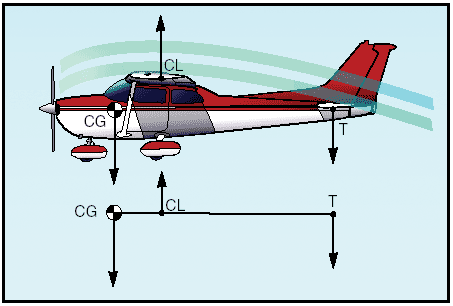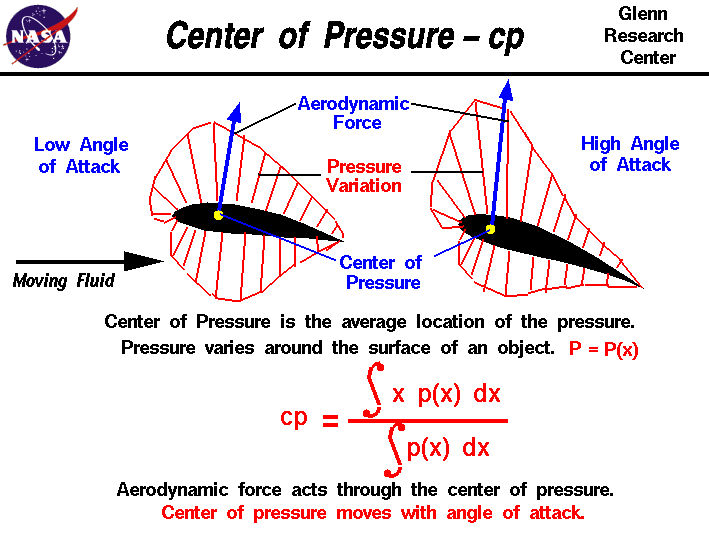photofly wrote:I showed it for the 182; you want me to repeat it and see if it's true for the 172 also?
No, you showed me some silly pictures, without any math, or correct theory to substantiate your claim of "tail lift"
Moderators: sky's the limit, sepia, Sulako, Right Seat Captain, lilfssister, North Shore
photofly wrote:I showed it for the 182; you want me to repeat it and see if it's true for the 172 also?
So the actual hands and feet of piloting of a plane is mostly managing the inertia and aerodynamics of the plane, and that's just maths and physics too?To the extent that aerodynamics is just maths and physics, then yes
Best advice in this entire thread.In the mean time, for heaven's sake, all the other pilots reading all of this, please depend upon the formal training you have had, and supplement it with authoritative information. Some of what can be read on the internet is simply blindly wrong.
OK here's a more formal version then.Strega wrote:No, you showed me some silly pictures, without any math, or correct theory to substantiate your claim of "tail lift"
Er, yes, actually, I did. I told you to read up on the stick free neutral point. That's where your problem lay.PIlotDAR wrote:Neither of you has risen to describe how the results I recorded and presented, relate to a certifiable airplane.
38 years of piloting doesn't seem to help you read and understand what someone else writes, when your real desire is just to argue instead. I will try one more time.They represent exactly the non compliant conditions you promote as normal, I would think that you'd be hanging your hats on them!

PilotDAR wrote:Were the force which the horizontal tail exerts around the pitch axis to change from a downward force to an upward force ("lifting"), the pilot would experience control reversal, which is extremely disconcerting, and not approvable.
It would result in very unpleasing stall handling characteristics, and be graphed something like this,
(The reference to "pounds" is control force measured in pitch, with "-" being a push force.)
(and "Tq" is the % engine power being produced)
which I recorded during a flight test in a Cessna like derivative aircraft. This was definitely not certifiable, and downright scary when I first experienced it during takeoff.
PilotDAR wrote:Sec. 23.173
Static longitudinal stability.
Under the conditions specified in Sec. 23.175 and with the airplane trimmed as indicated, the characteristics of the elevator control forces and the friction within the control system must be as follows:
(a) A pull must be required to obtain and maintain speeds below the specified trim speed and a push required to obtain and maintain speeds above the specified trim speed. This must be shown at any speed that can be obtained, except that speeds requiring a control force in excess of 40 pounds or speeds above the maximum allowable speed or below the minimum speed for steady unstalled flight, need not be considered.
That requirement is applicable to all C of G positions
I think the disconnect in this conversation is that PhotoFly is talking about moments on the whole aircraft to establish equilibrium, but PilotDAR is talking about control forces -- which are related to but not the same thing as stability. Control forces are determined by the hinge moment. For a given tail load, the hinge moment can be varied by changing the size or geometry of the elevator horn, shifting the hinge position, readjusting the trim tab, re-gearing the servo- or anti-servo tab, etc. The certification standard quoted above ultimately pertains to hinge moment requirements. These hinge moment requirements can be met (or violated) regardless of the direction of the load on the tail.PilotDAR wrote:It's not the force on the elevator control, but the change in force per change in G (with no change in trim) which matters
Once again, hinge moment, not tail force.Strega wrote:fyi most airplanes I fly,, you have to pull back "hard" to make them stall....
I haven't checked your numbers, but your approach seems valid at first blush. I will qualify that again though, with the fact that we are ignoring the (possibly significant) effects of the fuselage and engine.photofly wrote:So my range of CG's for which the tail lifts should read about 39" to 48.5" (depending on airspeed).
Do you agree with the calculation?

Sign me up! That course has been on my wishlist for ages.photofly wrote:Bill Crawford, who wrote that document, runs an unusual attitude training course, with an academic ground school attached. Who's up for a trip down to Plymouth?
Evidence that the thrust doesn't play a huge role: that (flaps up) the pitch change with power is relatively small and what pitch change there is seems mostly to come from increased downwash over the tail.I will qualify that again though, with the fact that we are ignoring the (possibly significant) effects of the fuselage and engine.
Of course not. I don't think anybody claimed you should fly those airplanes differently. On the contrary, the point is that you won't even notice if your tailplane generates lift or not.PilotDAR wrote: Nothing in the foregoing should encourage anyone to fly their aircraft "differently" or outside its limitations, nor teach flying differently than conventional norms provide for, other than perhaps to acknowledge that there could be factors out side the norm, around the edges which conflict with conventional thinking. Those are accounted for in the certified aircraft design, so think about them if you like, but fly the plane as it was approved.

Teenaged girls have a well-proven path towards monetization.Colonel Sanders wrote:PF: You and Liquid Charlie, like teenaged girls, have
to learn to stop giving it away for free!


Ok, I'm curious. What was the fix here? Or was the project abandoned?PilotDAR wrote:It would result in very unpleasing stall handling characteristics, and be graphed something like this,...
which I recorded during a flight test in a Cessna like derivative aircraft. This was definitely not certifiable, and downright scary when I first experienced it during takeoff.



Great and clear post! Maybe you could add some airframe moments yourself (what would be realistic) and see how the curve moves in function of these moments.photofly wrote: As usual, corrections to my math or analysis are gratefully accepted.
Colonel Sanders wrote:What the tail does:
As C of G moves aft, aircraft gets faster because
tail creates less drag. Unpleasant to fly.
Next question?



I can quote the internet too... so when you disagreed with this..The only exception is during stall when the C of L moves rearward.
I can show you this.Propeller blades do the same thing.



Because of the decreasing distance between C of L and the C of G.It is not supportive of increasing the downforce on the tail of the aircraft.